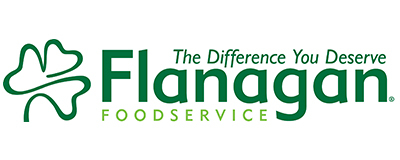
We collect basic website visitor information on this website and store it in cookies. We also utilize Google Analytics to track page view information to assist us in improving our website.
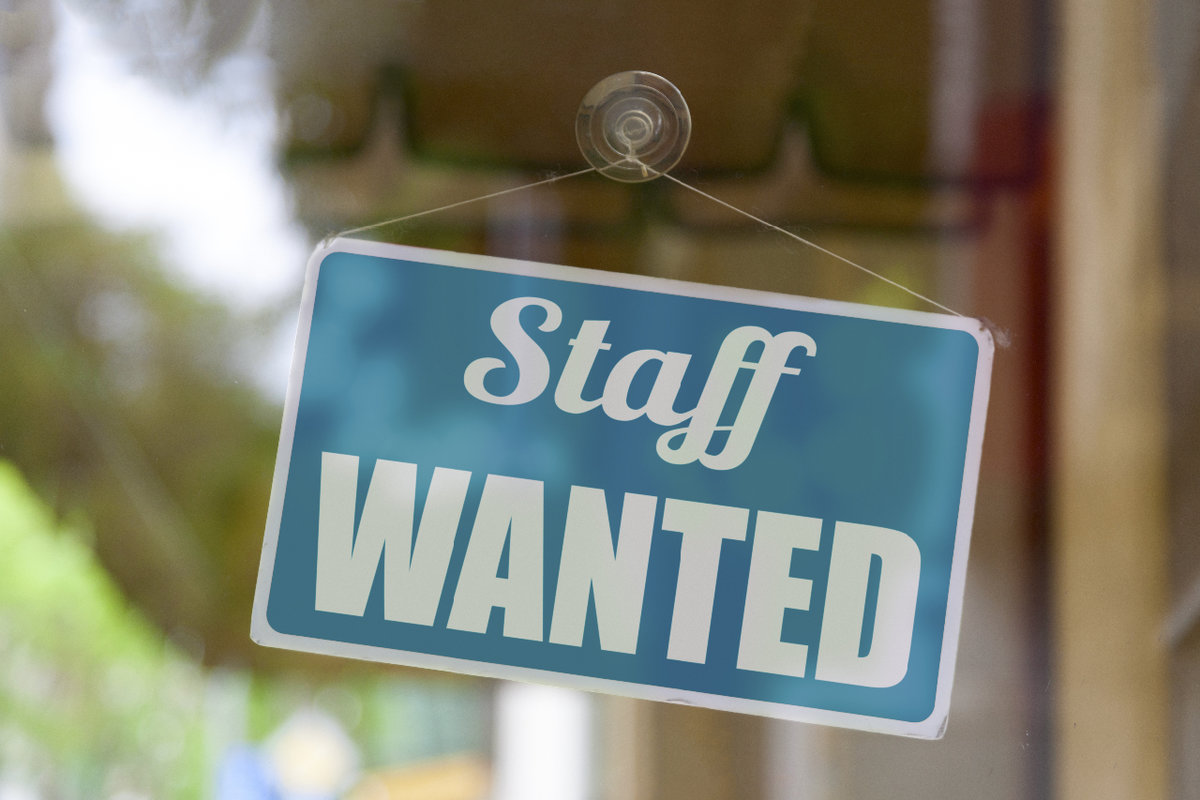
The perennial challenge of staffing in the labour-intensive foodservice industry has only been exacerbated by the COVID-19 pandemic. Widespread staffing shortages as restaurants reopen, coupled with serious financial losses due to long periods of closures and restrictions, mean savvy foodservice operators are looking for effective retention and hiring strategies that won’t break the bank.
Objective analysis of a problem’s root causes is the first step to finding solutions. While some reasons for staff shortages are beyond your control, be open to the possibility that your own practices may be a factor. For instance, ongoing government support programs may be one reason foodservice staff aren’t flocking back. But telling staff that their colleagues who haven’t returned would rather collect a benefit cheque than work could backfire: finger pointing may be part of your retention problem.
There are many nuanced reasons that many have chosen to leave the foodservice industry — or perhaps your establishment — including:
Some retention and recruitment strategies come with a price tag. Assess that against the costs of losing valuable employees you’ve already invested in and operating short-staffed. You may find that you can’t afford not to implement some of those strategies.
The cost of turnover can run to several thousands of dollars per departure, based on hiring process and training costs, lost productivity, and other factors. In pandemic times, turnover cost cuts even more sharply. Without enough staff to run your restaurant, tables may sit empty; some restaurateurs have even had to cut back on operating hours or close altogether.
It may seem counterintuitive, but think about retention before hiring strategies. Why? Because the reasons your staff want to stay are also why people want to join your workplace. A poor reputation in the job market due to high turnover has a chilling effect on hiring; being known as a great employer attracts applicants.
The pandemic created a seller’s market in real estate, but when it comes to foodservice jobs, it’s a buyer’s market. Job seekers have their pick and so do your current staff — retention is more important than ever.
Pay Increases
In addition to providing competitive starting wages, consider implementing pay ranges with increases at set intervals. On a four-step scale, the starting rate could be followed by three incremental increases every six months to a year to encourage employees to stay.
Tip Distribution
Is your tipping policy — or lack of one — a source of staff dissatisfaction? You may not be ready to build gratuities into menu costs, but tip sharing could address compensation inequities between front- and back-of-house staff.
Benefits
Jeff Dover, principal at the foodservice consultancy fsSTRATEGY Inc., says health and/or dental benefits can be cost effective for small operators. “Benefits are important and, given that many restaurants don’t offer them, can make a restaurant an attractive place to work. Help with childcare is very beneficial as well.” Dover says paid sick days are timely given the pandemic. While some employees may treat them as vacation days, there is a pressing need for employees not to come to work sick.
Referral Bonuses
“Referral bonuses are becoming more prevalent,” Dover adds. Not only are they attractive to current staff, but he says they work well too. “New hires are more likely to stay if they know someone, especially if that person has stuck their neck out to recommend them.”
Offer ongoing training and development for staff who’d like to learn new skills, rotate through different jobs, or advance into leadership.
Ongoing Training
Training isn’t just for new hires. Offer ongoing training and development for staff who’d like to learn new skills, rotate through different jobs, or advance into leadership. Ask what they’d like to learn more about to keep it timely and meet their needs.
Establish Career Paths
Communicate the career paths in your establishment. Dover says, “Teaching people what it takes to get promoted and helping them do so is great for retention.”
Prioritize Staff Health and Safety
Health and safety is top of mind these days. Make it a topic at all staff meetings, reviewing protocols to bolster employees’ confidence that they and their co-workers are doing the right things the right way for safety. Be proactive about discussing mental health, and consult industry and community resources to address any issues.
General Culture
Is your culture rigid or flexible? Do schedules take staff needs into account? Are minor repairs and interpersonal issues addressed quickly to minimize day-to-day work frustrations? Do you communicate openly with your team? Do staff feel safe bringing forward concerns? Do you offer open recognition but private criticism (constructive, of course)? Never underestimate the retention and hiring power of your staff feeling supported and heard.
Think about recruiting online, offering applicants the choice of submitting traditional or video résumés, and conducting Zoom interviews.
Hiring Strategies that Reflect the Times
Asking applicants to drop off paper résumés can be off-putting for a digital-savvy labour pool. Trendy speed-dating-style hiring fairs are problematic during the pandemic. Think about recruiting online, offering applicants the choice of submitting traditional or video résumés, and conducting Zoom interviews. If you want to meet in person before making the final decision, use those tools to shortlist candidates.
Use Your Website for Hiring
Your website is an important tool in your hiring process. Amina Gilani, co-founder and COO of Sociavore, the independent restaurant website platform and Brand Points PLUS partner, says: “Use the Sociavore job creator tool to create customized job listings and generate mobile-friendly application pages right on your restaurant website. You will receive virus-screened application packages directly in your email — no third-party recruiting website required. Accept and manage application submissions all from one dashboard.”
Go Social for Recruiting
You work hard to build your social media accounts, so why not harness them for recruitment? Your followers just may want to work for you or refer candidates to you, so let them know you’re hiring and link to your website job listings.
Signing and Retention Bonuses
Signing and retention bonuses can sweeten the deal for potential new hires.
When it comes to hiring and retention, Dover says, “The best thing you can do is make your restaurant a great place to work. […] Treat employees like a valuable commodity (which they are), and do what you can to keep people happy. […] Make your restaurant a place where Gen Z wants to work. They want to work for a company whose values align with theirs, so be environmentally friendly, address social issues, etc. Get the staff involved in implementing programs. If you nail this, you will have a way easier time than other restaurants finding and retaining staff.”
Written by Marlene Cornelis. For more great articles visit chefconnexion.com.

Keeping your guests informed and up to date about what to expect when dining at your establishment has never been so critical to the success of your foodservice operation. The restaurant industry remains in a state of constant change, and to maximize the allowable dining capacities, you need to up your communications game.
Start off by keeping these key questions top of mind for a more tactical approach to your communications:
First and foremost, a transparent and authentic approach is critical in achieving effective communications that will leave your restaurant guests feeling comfortable, safe and informed about the NEW dining experience at your establishment. Be first to share your health and safety procedures, operational changes such as seating and team updates, and menu modifications, so guests know upfront what to expect without having to ask. This tactic will help to demonstrate that your team takes the changing circumstances seriously, you’re informed, and you want to provide the best guest experience.
In a recent poll, 59% of respondents shared that they use Google to find out information about a restaurant, while 41% use Instagram.
Reservation booking platforms, search engine listings, your website, social media, and review websites all share pertinent information about your restaurant that informs guests decision-making. The information listed on these digital touch points must to be current and consistent for maximum awareness. There is nothing more frustrating for a guest than showing up to find a closed restaurant, when online it says it’s open.
Here is the key information guests are looking when they search; be sure to keep it updated:
![]()
TIP: Help reduce email inquiries, direct messages, and phone inquiries by providing a few frequently asked guest questions and up-to-date team responses on your website, Facebook, and Google Business page!
![]()
It’s easy these days to overuse the pandemic in our communication, however when the time is right, focus on the new and exciting things happening at your restaurant to entice guests back in to dine and continue to take out. New menu items, improved service, seasonal drinks, revamped décor and design, weekend events, and special occasion celebrations are all things to communicate that will remind guests of why they should choose to dine with you versus a competitor. Promote what you’re best known for, and feature it on all of your communications platforms!
Social media is your simplest and quickest way to share what’s happening at your establishment with guests, and to spark two-way communication. Up your posting to daily, and share the unique brand experiences that will excite guests the most. With health and safety top of mind for diners, ensure your photography and video content showcase your team following the proper procedures, in order to resolve any guest concerns; transparency is absolutely the best policy. When boosting your social media presence be prepared for increased guest inquiries through direct messages and comments, and have a plan in place to respond within less than 24 hours. The FAQs and responses are also a useful tool when responding on social media.
Whether you send monthly emails or have never sent email communication from your brand, now is the time to get in the inbox. You’ll be fighting for space, however email communication is a great tactic to provide more detailed information for guests to help keep them informed of your weekly or monthly happenings. E-newsletters should be short and sweet, with a catchy subject line, and include hyperlinks either back to your website or a direct email for more information. Utilize email communication to feature operational and safety news, menu features, and special events.
![]()
TIP: Can’t afford a graphic designer? Try Canva at no charge for a well-designed branded e-newsletter you can create in no time.
![]()
Guests are eager and excited to get back to in-dining, and the most effective approach to filling your seats is to communicate timely and accurate information that sets a clear guest expectation. Your brand can’t over-communicate right now; it’s time to get loud!
Written by Kate Engineer and shared with permission from chefconnexion.com
Visit chefconnexion.com for more great tips
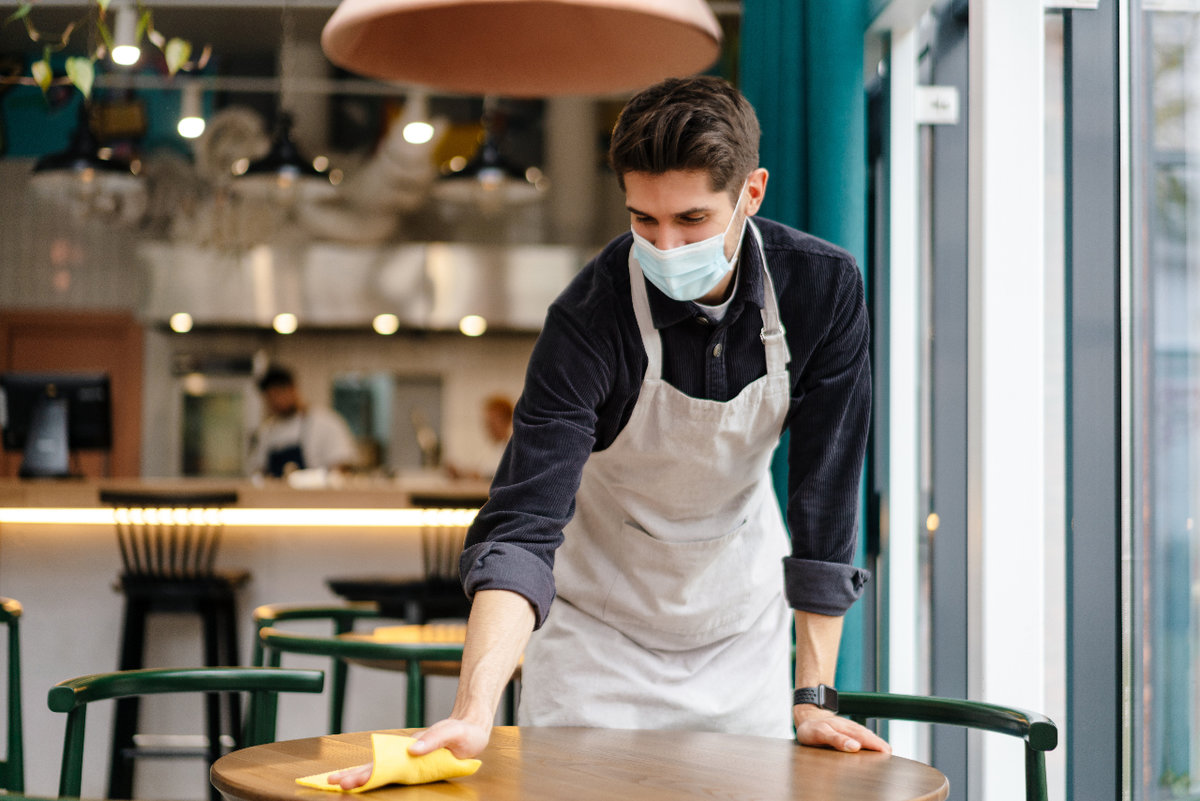
It’s a fact. Restaurants across Canada are on the brink of reopening, whether to patio dining, in-restaurant meals, or both. Diners are understandably excited to return to their favourite culinary haunts. But what about restaurant staff, many of whom have been furloughed for part or all of the pandemic? How safe is it for them to return?
As Jeff Dover, principal of fsSTRATEGY Inc., says, “Very few cases of COVID-19 have been confirmed as spreading in restaurants; this includes areas of the country where indoor dining has been allowed. In short, the restaurant industry was [already] doing a good job of keeping staff safe.”
“Very few cases of COVID-19 have been confirmed as spreading in restaurants. In short, the restaurant industry was [already] doing a good job of keeping staff safe.”
Jeff Dover, principal of fsSTRATEGY Inc.
But keeping restaurant staff safe and having restaurant staff who feel safe are two different things. Canadian Restaurant Workers Coalition has been petitioning provincial governments to improve restaurant workers’ protections like paid sick leave and overtime pay. As reported in the Toronto Star, Not 9 to 5, a non-profit providing resources for mental-health well-being among hospitality workers, recently introduced the Mind Your Health project. The project includes a certification program on workplace safety from a psychological perspective, along with an online survey to collect data on mental-health well-being among hospitality workers.
“The key for me is to ensure that staff wear masks and, even more so, keep six feet apart when possible,” advises Dover. “When staff have to be within six feet (e.g., taking orders, picking up food), the time of exposure should be limited. One of the primary challenges is tight kitchen spaces such as a line with multiple stations not six feet apart. Redesigning the menu to have fewer kitchen stations will help keep the staff safe. COVID-19 is more likely to be transmitted indoors and in close spaces. Redesign your workflows to eliminate or limit such interactions.”
Sanitize regularly. Tables, work surfaces, and other areas, both front and back of house.
Reduce staff sharing. For instance, kitchen staff should never share utensils at back of house.
Change your menuing. Other changes will need to be instituted to ensure the safety of both your guests and your employees. Reusable menus, for instance, may become a thing of the past. Many restaurants, says Dover, are putting QR codes on tables to limit contact with shared items. “When guests request menus, they should be provided with a single use copy. Condiments should not be kept on tables and should be sanitized before use. Cutlery should be rolled and brought to the table after the guests are seated. Simple adjustments like these will assist in limiting the spread of COVID-19 for both guests and staff.”
Appoint a COVID-19 point person. “I recommend having someone responsible each shift to ensure COVID-19 prevention practices are adhered to,” says Dover. “This person could also be the go-to for questions about practices being employed to keep customers and staff safe.”
Organize vaccination days. A number of restaurant chains in the US have said they are providing pay for staff to get vaccinated and are even helping their employees to book appointments.
Offer paid sick days. This is key, says Dover. “You don’t want staff to come to work when they are not feeling well. Take advantage of federal and provincial paid sick day programs if you can. Paying sick days will be less expensive in the long run than having your restaurant closed due to a COVID-19 outbreak.” Should you experience an outbreak, make sure you have records of which employees worked when, along with info on your dine-in restaurant customers and who served them. Contact tracing is key.
Ramp up your communication. Let your staff know what you’re doing to keep them safe, and then inform your guests of the steps you’ve introduced to keep them – and your employees – safe. “If you are able to pay sick days, I would communicate it,” Dover advises. “The restaurant chains in the States paying staff (I heard two to four hours) to get vaccinated received great publicity. We have seen in jurisdictions that have opened up that there is significant pent-up demand. However, not all staff will be comfortable working and not all potential customers will be comfortable in dining rooms. Communication on the safety practices being employed will help alleviate any such fears.”
Employee safety, testing and validation will be key to successful restaurant reopening. Healthcare and foodservice workers may be required to validate their health status before handling food in the post-COVID-19 environment. Here are some protocols you should initiate to ensure the highest level of safety:
Written by Jane Auster and shared with permission from chefconnexion.com.
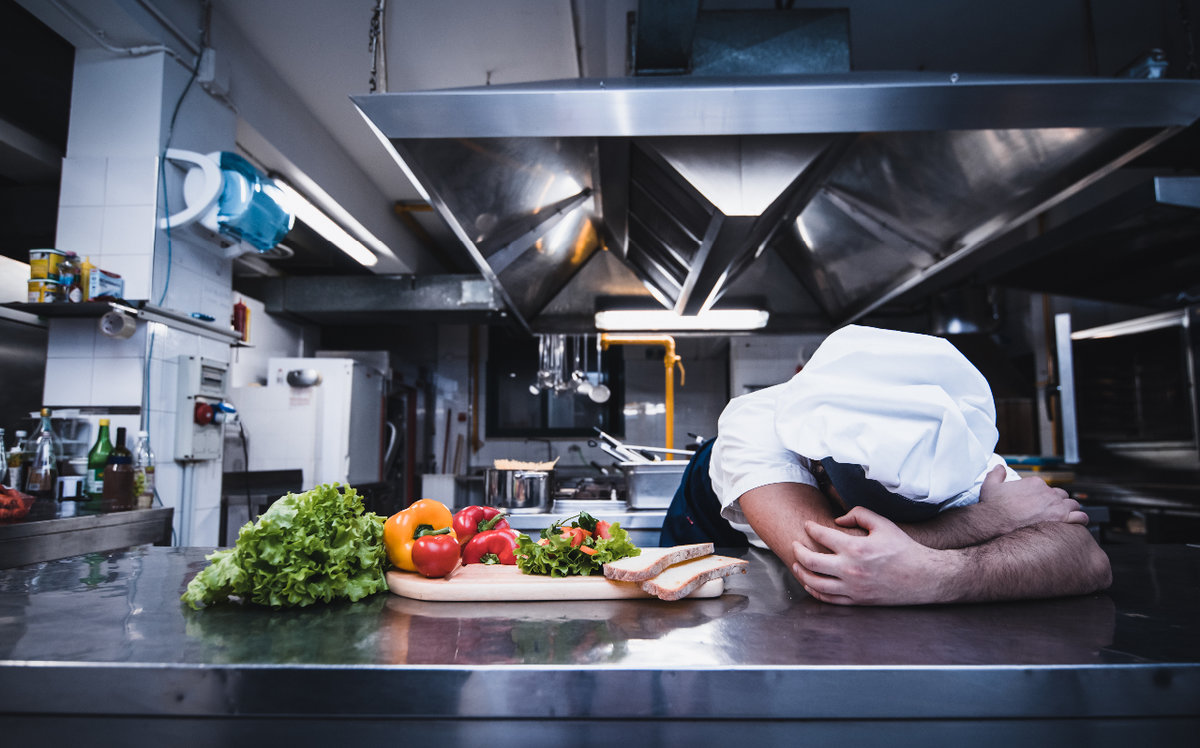
Even before COVID became part of our daily vocabulary, the foodservice and beverage industry had high rates of mental health challenges and substance use issues. It can be a stressful job at the best of times and the long, variable hours and fast pace make it difficult to always take care of ourselves. Burnout can take hold.
Running a restaurant in the midst of a global pandemic has ratcheted up the pressure, increased anxiety levels and created even more strain on our mental health. “The pandemic has made things worse in so many ways,” says Hassel Aviles, co-founder of Not 9 to 5, which she launched with executive chef and restaurateur Ariel Coplan in 2017. “This is everyone’s first global pandemic so we are all figuring it out as we go, but this has severe consequences.”
Through this challenging time, we’re all feeling extra anxiety, frustration, trauma and grief, she notes. Increased isolation due to physical distancing, job loss and business closures, financial insecurity, and a lack of sufficient support and resources are only piling on the pressure.
Aviles, who has worked as a bartender and server, knows firsthand the pressures and perils of the job. “Back then, no one was having conversations about mental health or addiction with staff.”
When Aviles and Coplan asked their hospitality community, 90 per cent said “yes” to experiencing mental health and/or substance use challenges. Their research and surveys over the last two years have revealed depression, anxiety, substance use, burnout and disordered eating as some of the top concerns.
There are some signs to watch for that can indicate someone you work with, or someone who works for you, might be struggling with their mental health:
Adapted from https://www.changedirection.org
“The best way for employers to ensure they’re paying attention is to create a working environment built on psychological safety,” Aviles says. “It means you feel you can be vulnerable with one another without experiencing any negative consequences. For too long, workers have been told to ‘check their emotions at the door,’ and this intolerance of vulnerability has created an environment of suppression.”

Aviles suggests creating a working environment where all team members are encouraged to seek help when needed, and have easy access to resources for mental health and substance use challenges. “It’s important to have an understanding of what supports are available including workplace accommodations, employee benefits and other means of support.”
Aviles and Coplan have created an online course to educate and train hospitality industry workers to better identify, understand, and respond to mental health and substance abuse challenges. They call it CNECTing, which stands for Change Needs Everyone Coming Together. “We chose this name because connection is essential to make a positive impact and change in our industry,” Aviles says.
Learn more:
Visit chefconnexion.com for more expert advice
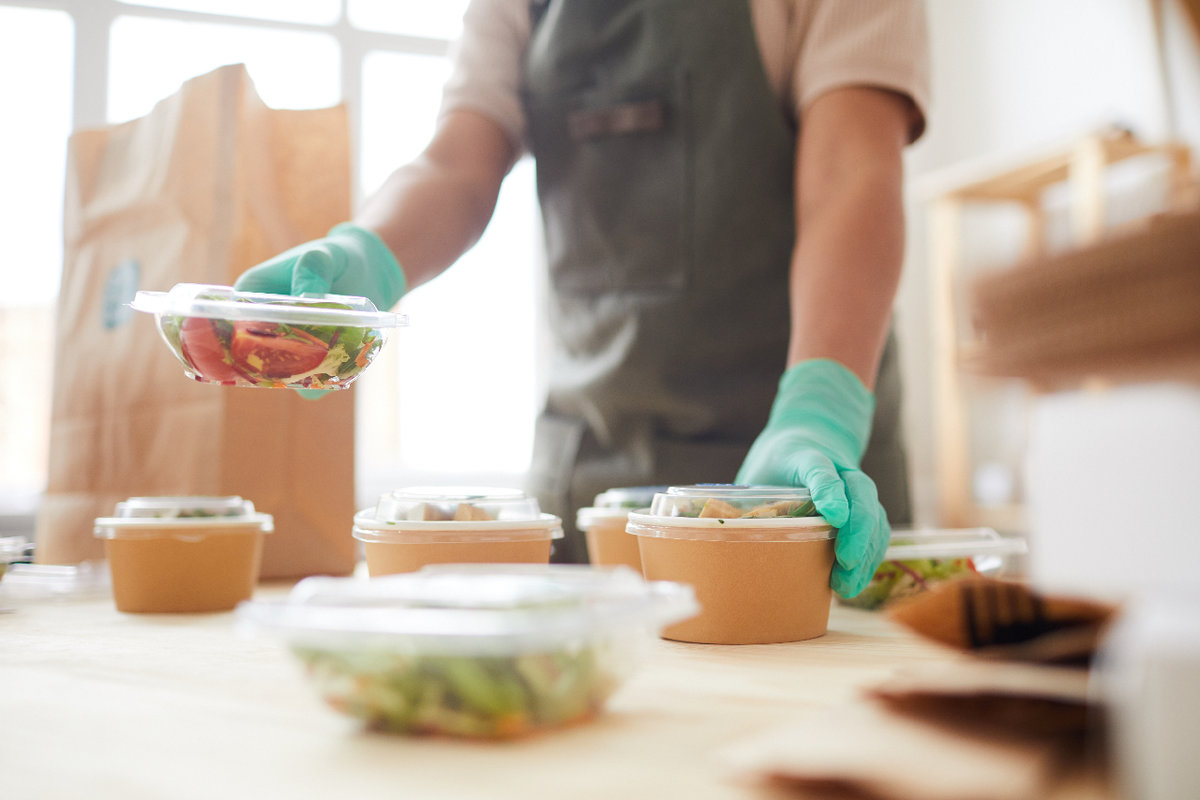
Hindsight is 2020, as the old expression goes. Certainly, as we rounded the corner in 2019, the prospect of a bright new year was uppermost in our minds.
Who could have foreseen a pandemic that would upend every aspect of foodservice? But there is a resilience in the industry and a sense of optimism that once we return to some semblance of normality, or at the very least, a new normal, restaurants will shine once again. To get a better read on what’s in store for foodservice, we turned to our data partner, Technomic Inc., to take a deeper dive into the trends for 2021:
Black Lives Matter protests in 2020 spurred calls to action for foodservice companies to fight for social justice and equality. As a result, businesses across the supply chain are committing to working harder to produce meaningful change. We’ll see more conscious efforts to hire, mentor and promote (especially in leadership positions) minority races and ethnicities, as well as women. There will also be an uptick in internal antibias training, partnerships that support minority organizations and donations to social justice-related causes.
BACKGROUND
Stat: Nearly half (46%) of consumers report that it’s important to them that restaurants are engaged in social justice – consistent across all generations. In addition, more than two-fifths (42%) of consumers, including 59% of Gen Zers, express that it’s important to them that restaurants support the Black Lives Matter movement.
Base: 1,000 consumers ages 18+
Source: Technomic Canadian Omnibus consumer survey data
Example: Uber Eats waived delivery fees for consumers ordering from Black-owned restaurants throughout 2020.
As the pandemic rolls into another year, consumers will continue to prioritize safety when making restaurant decisions. They’ll favour operators who earn their trust by always executing strict sanitation and social distancing protocols, such as proper food handling, rigorous restaurant cleaning and limited indoor seating. This will lead to more touchless digital menu boards, contactless ordering and delivery options, pre-packed and grab-and-go items, tamper-proof packaging, and high-quality air filtration and ventilation systems.
BACKGROUND
Stat: Nearly two-fifths (38%) of consumers think restaurants could do a better job promoting their safety and sanitation protocols.
Base: 1,000 consumers ages 18+
Source: Technomic Canadian Omnibus consumer survey data
In anticipation of a vaccine, operators across the world will innovate highly buzzworthy products to attract guests back into restaurants and stand above the competition. This is a tactic we’ve seen Asian markets employ during a previous easing of lockdown restrictions. Compelling menu development will include inventing wacky mashups and next-level collaborations, expanding into new mealparts and dayparts, and investing in product improvements.
BACKGROUND
Stat: Most consumers agree that they are likely to visit a fast-food (65%) or fast-casual (71%) restaurant that they don’t typically patronize if it has a unique limited-time offer.
Base: 551 and 701 consumers ages 18+
Source: Technomic Ignite consumer data featuring the 2020 Canadian Future of LSR Fast Food & Fast Casual Consumer Trend Report
Example: Woodhouse Brew Pub launched a modern take on nostalgic TV dinner trays with its “Hungry Friends” reheatable meals. (Toronto)
COVID-19 has motivated both consumers and operators to quickly embrace foodservice technologies that offer contactless and/or touchless aspects, including mobile apps, ordering kiosks and digital menu boards. Operators will test more advanced technologies in the coming year as consumers continue to prioritize safety and convenience. On the horizon innovations will include more GPS tracking, voice ordering via an AI assistant, facial recognition systems and drone delivery to provide frictionless off-premise services, as well as greater investments in robotics to maximize labour efficiencies for both back and front of house operations.
BACKGROUND
Stat: Nearly a quarter (23%) of consumers 18-34 strongly agree that if available, they would be interested in having items delivered via innovative delivery technologies (e.g., drones, self-driving robots, etc.).
Base: 1,282 consumers who ever order off-premise
Source: Technomic Ignite consumer data featuring the 2020 Canadian Delivery and Takeout Consumer Trend Report
Example: Swiss Chalet updated its mobile app. The chain’s new version of its mobile app features an updated interface where guests can save their favorite items, collect coupons in the Coupon Wallet, opt in or out of receiving silverware with their order, tip ahead and more. It also includes a “giving” feature where customers can gift Swiss Chalet meals to friends and family.
Operators will increasingly look to black and deep purple ingredients in 2021. All of these ingredients provide a wow-factor colour when featured in food and drink, and some also have either umami flavour profiles or immunity-boosting benefits (due to their anthocyanin-rich capabilities). Ingredients to watch include dark berries, such as saskatoon serviceberry and blackcurrant; purple corn and potato; black salt, kale and gnocchi; activated charcoal cocktails; squid ink beyond pasta dishes; and ingredients in ashes, such as ash-covered cheeses, onion or leek ash, etc.
BACKGROUND
Example: RGE RD’s Purple City cocktail with Park Distillery vodka, Hanson Distillery cherry rye, maple saskatoon berries and plum bitters (Edmonton)
Movements to support Canada’s economy will grow as borders remain closed and small businesses continue to struggle. We’ll see operators increase their sourcing from area suppliers and visibly promote these collaborations on menus. At the same time, community-minded consumers will actively seek to patronize restaurants where their money also helps support local farmers and other purveyors. Driving this effort will be distributor partnership with local suppliers and producers that help spread awareness of their products and fulfill growing patron demands.
BACKGROUND
Stat: Approximately two-thirds of consumers (67%) say they are more likely to purchase and/or are willing to pay more for food and beverage that is locally sourced.
Base: 355 consumers ages 18-73
Source: Technomic Ignite consumer data featuring the 2020 Canadian Generational Consumer Trend Report
Example: The Pickle Barrel celebrated Ontario farmers by rolling out LTOs featuring local ingredients, including rainbow trout from Manitoulin Island and corn from Waterford
Off-premise services have served as a lifeline for operators throughout the pandemic. But as consumers grow accustomed to the perks of these occasions (i.e., convenience, speed and contactless experiences), operators are hedging their bets by incorporating off-premise into their long-term strategy to offset future dine-in disruptions. We’ll see an uptick in new and remodeled stores that emphasize takeout, delivery, drive-thru and curbside pickup, as well as new and upgraded technology to make these services seamless and distinctive.
BACKGROUND
Stat: Approximately a third of consumers say they plan on ordering food and beverage for takeout (38%) and delivery (31%) more in 2021 than they did in 2020.
Base: 1,000 consumers ages 18+
Source: Technomic Canadian Omnibus consumer survey data

